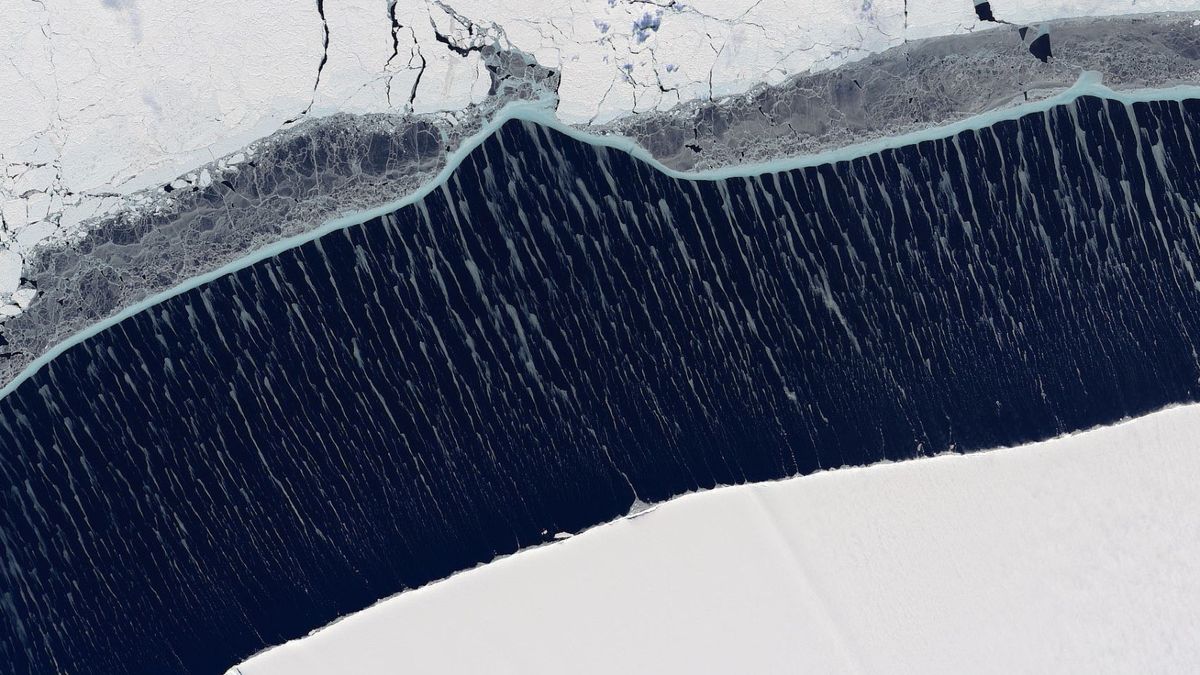QUICK FACTS
Where is it? The Ronne Ice Shelf, Antarctica
What’s in the photo? Wispy strands of ice stretching across a narrow channel of water
Which satellite took the photo? Landsat 8
When was it taken? Nov. 20, 2021
This photo captured streaks of fragile ice stretching across a narrow ocean channel in Antarctica. The rare sight was triggered by a combination of high winds and unusual ocean currents, and it could become more common in the coming years due to human-caused climate change.
The ice streaks stretched across a roughly 3.7-mile-wide (6 kilometers) channel of seawater between the Ronne Ice Shelf — a massive, white ice sheet attached to Antarctica’s mainland that frequently births some of the world’s biggest icebergs — and a patch of fragmenting sea ice, which appears gray around its edge.
The streaks are made from nilas, a type of super-thin ice less than 4 inches (10 centimeters) thick, according to the National Snow and Ice Data Center (NSIDC). Nilas is normally created when loose ice crystals, known as frazil ice, merge into fragile sheets across a still surface.
However, in this case, high winds created unusual whirlpool currents, or vortices, on the ocean’s surface, which stopped sheet ice from forming and forced the nilas ice to gather at the currents’ centers before being blown across the water, according to NASA’s Earth Observatory.
The high winds also pushed the sea ice away from the Ronne Ice Shelf, giving nilas more space to grow and stretch out.
Related: 12 amazing images of Earth from space
In the image, the nilas ice accumulates along the edge of the sea ice, forming a pale blue band. The color is unusual for this type of ice. Normally, glaciers and sea ice appear blue only when they become so dense that they absorb the longer wavelengths of light, meaning they only reflect the shorter, blue wavelengths.
“I’m not quite sure how the sea ice here gets the blue color,” Walt Meier, a research scientist at NSIDC, told the Earth Observatory at the time. But the ice may be getting squished together making it very compact and allowing it to absorb longer wavelengths than normal, he added.
The occurrence of icy wisps could become more common in the future due to the effects of climate change. In November 2021, when the picture was taken, the Antarctic sea ice extent — the area of the ocean around Antarctica covered by sea ice — was well below the average for that time of year, according to NASA’s Earth Observatory. Thinner and more fragile sea ice is more susceptible to being moved around by the wind, making the wisps more likely to appear in the future.












/https://tf-cmsv2-smithsonianmag-media.s3.amazonaws.com/filer_public/d1/82/d18228f6-d319-4525-bb18-78b829f0791f/mammalevolution_web.jpg)







Discussion about this post